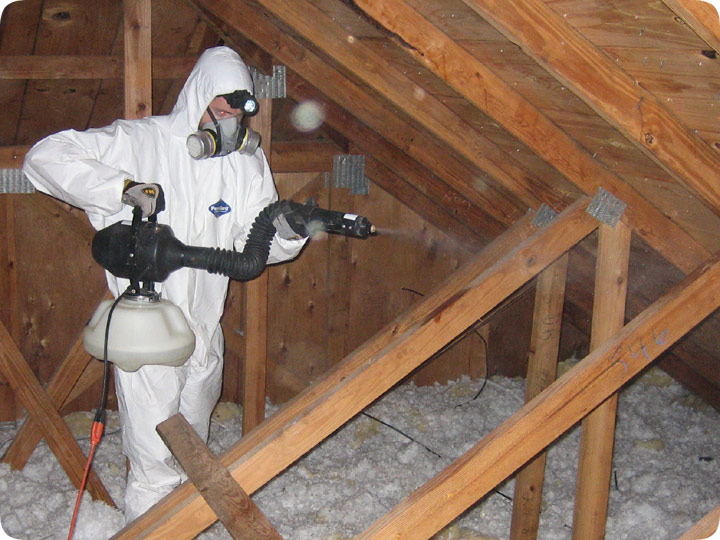-
info@aaanimalcontrol.com
Call us for help in your town
Humane Wildlife Education
Attic Restoration - Fix and Clean the Attic

4.14.2004 - Attic restoration is the term often used in the nuisance wildlife control industry to describe the process of restoring an attic to its original state after it has been inhabited and soiled by wildlife. So for example, in this case, a family of squirrels lived in this attic for years, and created a big mess within, by bringing in a great deal of nesting material, and also leaving behind a lot of waste - both droppings and urine, which I could easily smell. The problem with the nesting material is that it creates a potential fire hazard. It's all flammable plant material, and of course it's positioned on or near electrical wires that the squirrels often chew on. This creates a serious fire hazard. Second, the waste is a potential biohazard, and rendered the attic unsanitary, in addition to the unpleasant odor. The odor also attracts new animals - either new squirrels or rats, or perhaps larger predator animals, such as raccoons. The squirrels also brought in parasites. The goal of attic restoration is to eliminate the problems the animals caused. Usual steps in attic restoration include:
- Removal of all nesting debris the animals brought in.
- Physical removal of animal droppings and urine-soaked insulation.
- Deodorizing and decontamination with cleaning agents.
- Complete removal and replacement of insulation in some cases.
- Damage repairs where applicable.
Do it yourself: Visit my Attic Decontamination page for tips and advice.
Get professional help: Visit my Nationwide Pro Directory of wildlife removal experts.
For more wildlife stories, click my Wildlife Blog or click my below banner to hire a local trapper.

After finding out that an animal or a group of animals has been living in your attic, you may want to restore your attic, so you get rid of any traces of the wild animals and you prevent another mess. If you are at the point where you have discovered that wildlife has been living in your attic, here are a few tips to help you with attic restoration.
The mess that an animal leaves after being in the attic undiscovered can be costly, smelly, and not pleasant at all. An animal, such as a rat or raccoon can chew on electrical wires and cause issues with air ducts. They will urinate and leave feces in several areas throughout the attic. Over time, it smells up the attic and can be harmful if you come in contact with it, causing diseases and infections to humans, such as salmonella, hookworm, and roundworm as well as Leptospirosis. Most of these infections are not highly contagious unless you come in contact with feces that is already infected by accidentally ingesting it in some way or if you inhale dust that is contaminated.
Removing the Animal
Once you determine that you have a problem, you will want to remove the wildlife from the attic as quickly as possible and without contaminating the rest of the house. If it seems to be overwhelming, you may want to contact a professional to remove it for you instead. Removing the animal can take a while. During this time, don't go up in the attic and make sure everyone else in the home stays away too.
Assessing the Damage
Now that the animal is out, you will now have to determine how extensive the damage is before you can begin to repair it. Most likely, the damage is confined to certain areas of the attic that include electric wires and insulation as well as ductwork. These wild animals tend to urinate on the insulation and collect the material inside the insulation to build their nests. Any contamination near the air ducts could be a potential hazard for your family to breathe in the toxins that are found in feces and urine. Urine from wild animals has a distinctive odor that you won't miss. Start by removing any area where you see or smell urine, feces, nests, or chewed wires.
Estimating the Cost
Once you have removed the insulation and other materials that are contaminated, you will want to clean the areas thoroughly. When cleaning, be sure you use a sanitizing agent and you are wearing gloves and a mask. Determine how many square feet of insulation you will need to replace and also check the wiring. Instead of trying to replace the wiring yourself, you may want to contact a licensed electrician who will replace the wiring in a professional manner.
The amount it will cost you will be determined by the square footage, how soiled the materials are, and the current price of materials when you restore your attic.




















